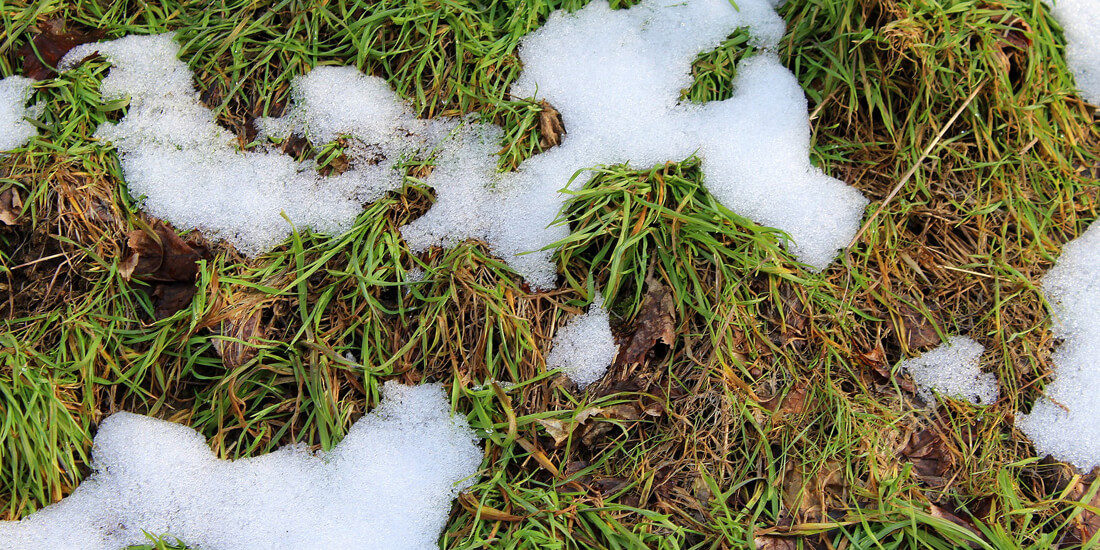Two typical winter lawn diseases and how to fight them

Winter is the perfect time for a villainous and deadly disease to take hold of your lawn throughout winter – especially when you’re not looking behind you! So, if you want your garden to look less pantomime and more Midnight Summer’s Dream come spring, you’ll need to keep your eye out for these felonious fungi throughout the winter months.
Snow Mould (Fusarium Patch)
As your white Christmas melts away, you may notice that some of the white patches aren’t shifting. This is because your lawn may be sick with one of the most common lawn diseases – Fusarium Patch. Grasses that are particularly susceptible to this disease are: Annual Meadow-grass, Perennial Ryegrass and Creeping Bent.
Your lawn symptoms will be yellow/brown grass in various patches. Fusarium Patch is not to be confused with just some patchy grass – you’ll notice that the patches will be brown around the edges going into the yellow patch, whereas regular patchy grass just needs a little more love and will generally reveal the soil underneath. We wish we could say that this disease is completely unavoidable – but you can avoid it.
With good lawn management, you can help prevent this from happening. Here’s what you need to do –
- Avoid using a fertiliser that has a high Nitrogen level
- Spike your turf regularly to alleviate compression
- Don’t walk on the grass when there’s snow!
If you suspect your lawn is diagnosed with Snow Mould, invest in a hand-held fungicide that will help you tackle the lawn head-on!
Red Thread (Corticum Disease)
It’s unfortunate – but fine-leafed grasses such as fescues and perennial ryegrass are most susceptible to Red Thread disease. Red Thread disease is usually a sign that you need to fertilise your lawn. Typical symptoms of Red Thread are patches of bleached grass, which will later turn a pink hue with red needle-like blades amongst the patch.
Although it probably won’t show until late summer or autumn, it will have worked away at your lawn during winter when nitrogen levels in the soil are low. As always, prevention is the best cure:
- Aerating your soil by spiking the turf
- Ensure to feed your lawn every Spring / Summer
If you haven’t done this and are seeing signs of Red Thread in your lawn (typically in moist weather – summer, autumn, winter), you can use a fungicide that contains Trifloxystrobin.
This is a fungicide that is available for amateur use. However, do not use a Trifloxystrobin solution twice a year, as your lawn will build immunity to it.
As always, prevention is the best cure, but if you should come up against these potential turf terminators, treat it with a Trifloxystrobin fungicide and put these diseases to bed!